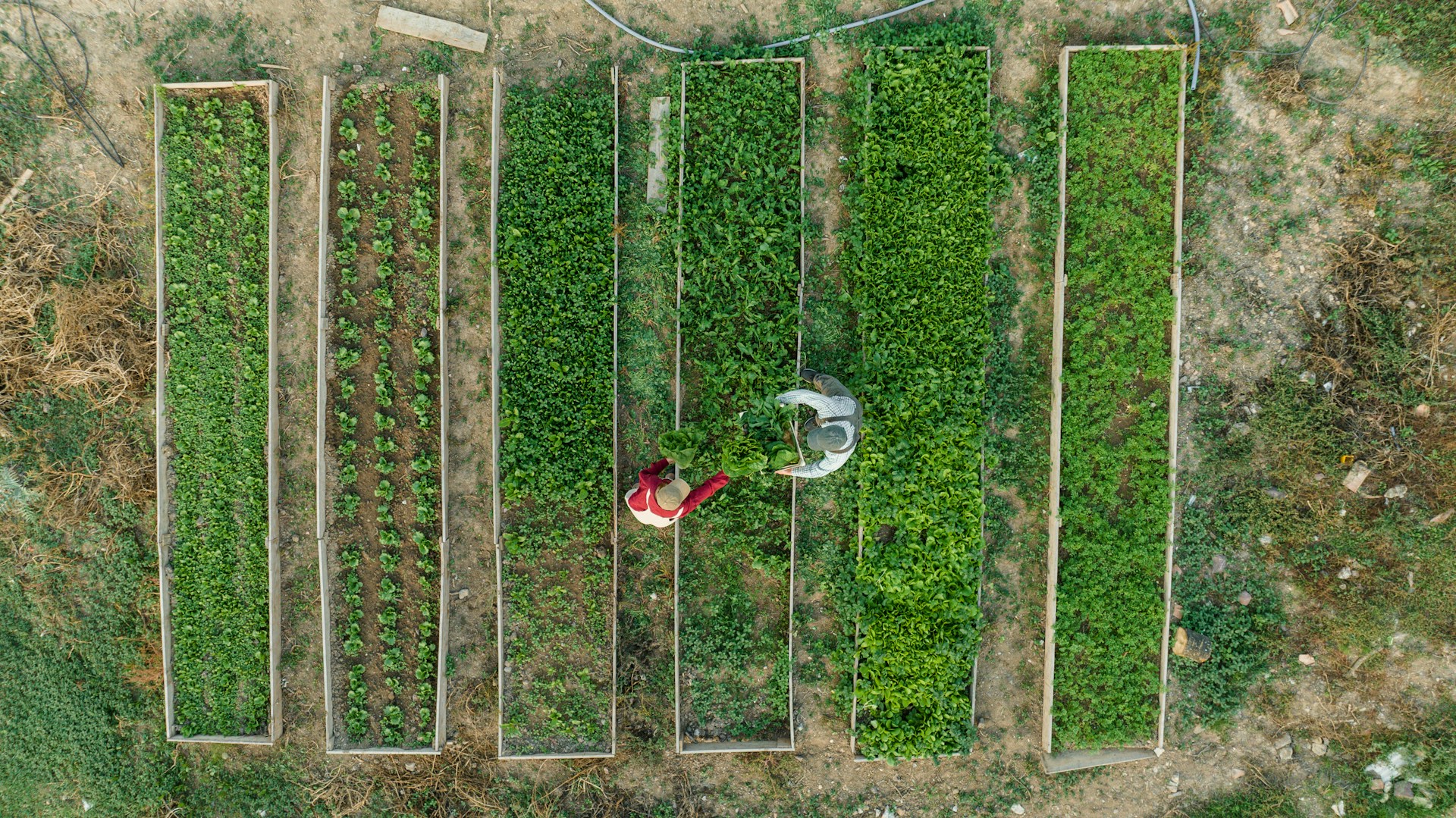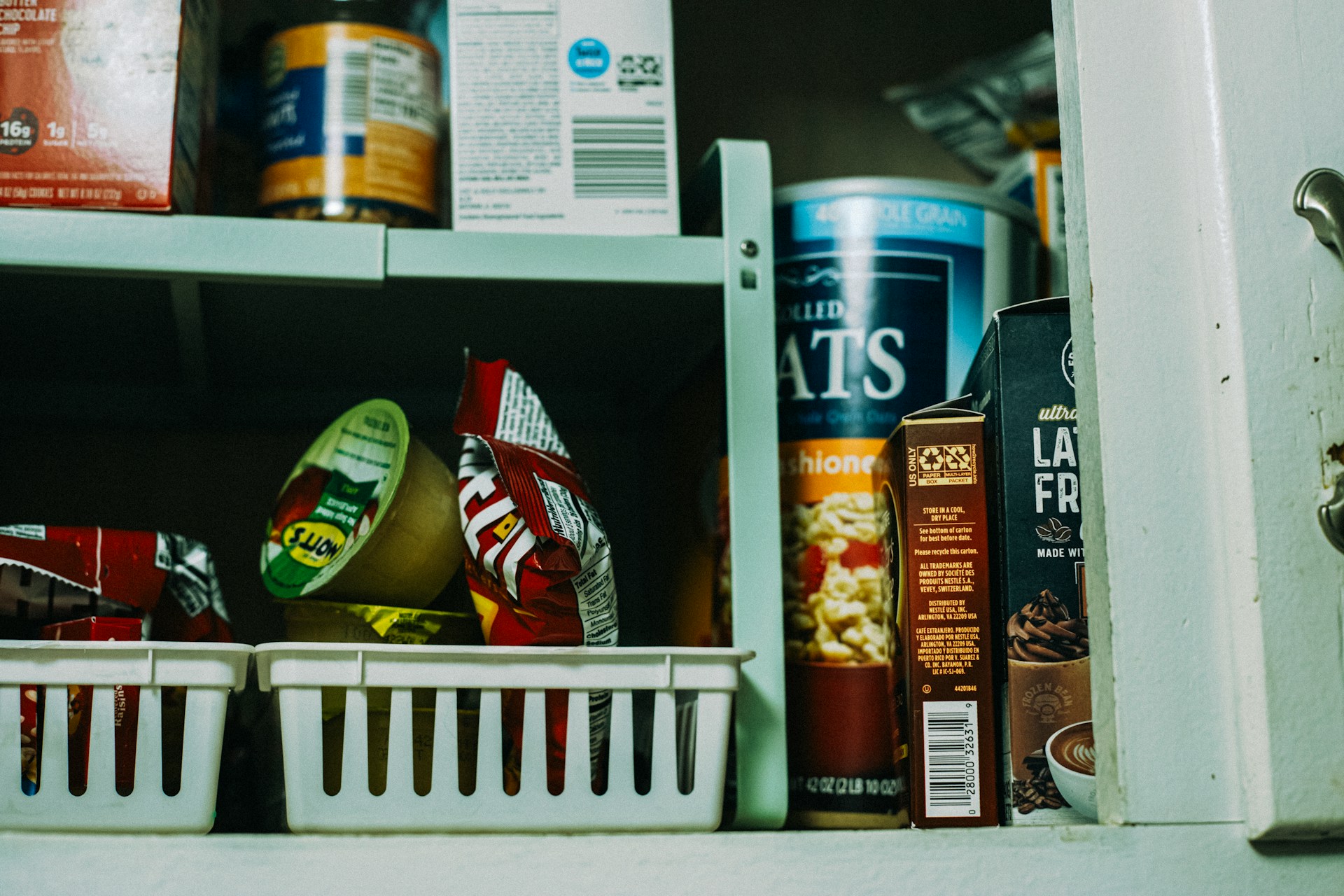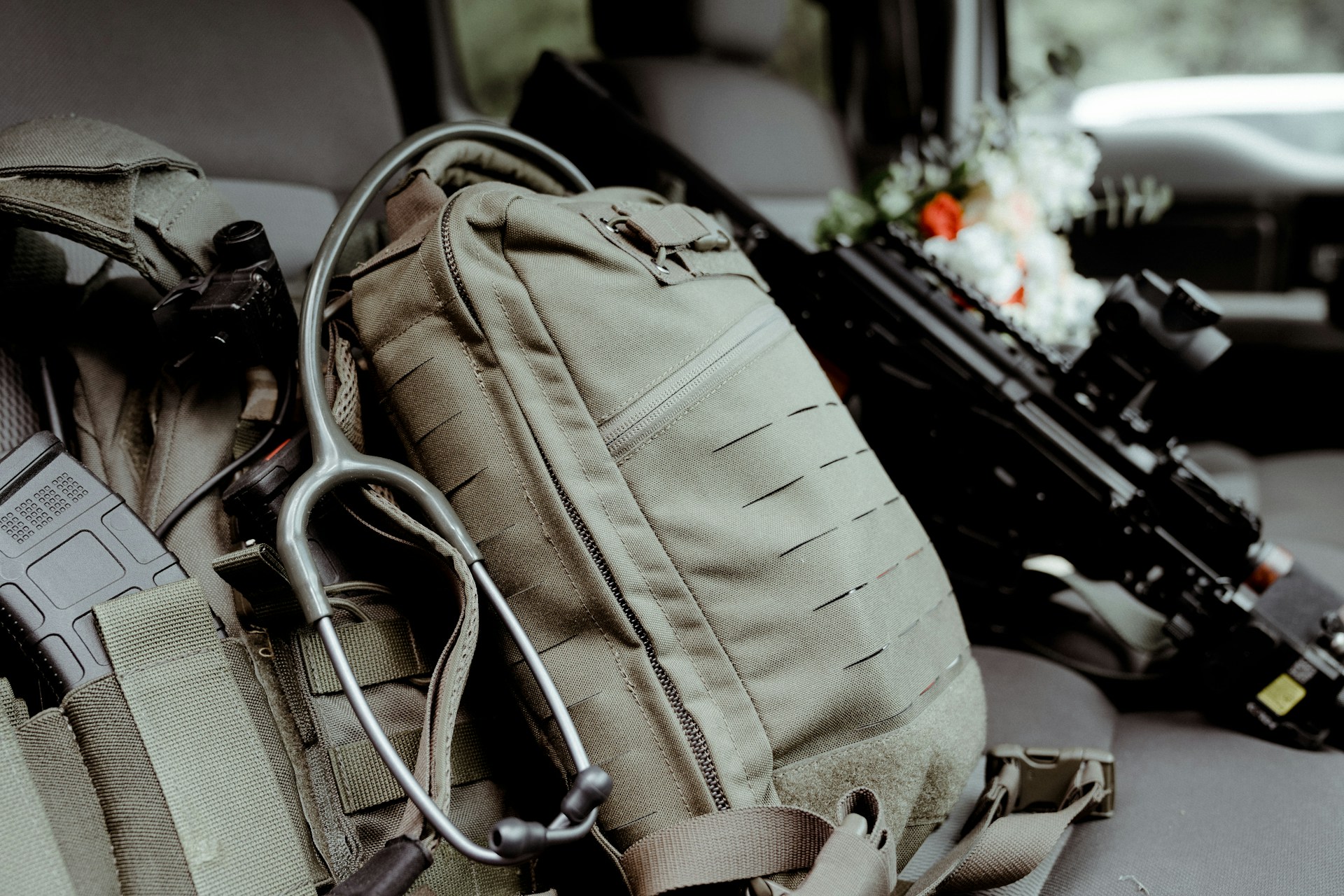Preparedness
Homesteaders’ Secret Weapon for Success and Survival Revealed

Homesteading is often synonymous with self-sufficiency, yet even the most independent homesteaders find that they cannot do everything on their own. This is where the importance of community comes into play. Building a network of like-minded individuals can provide not only practical support but also emotional companionship, which is essential when the isolation of rural life sets in.
A strong community offers numerous benefits. When you encounter challenges, having a knowledgeable group to turn to can be invaluable. Whether you’re troubleshooting a stubborn garden pest or learning a new skill, the collective wisdom of a community can guide you through. In times of need, your community becomes a resource for bartering or lending a helping hand. As one homesteader notes, “If you can’t perform a task alone, others in your homesteading community will pitch in to help.”
Beyond practical needs, community offers emotional support. Loneliness can be a real issue for homesteaders, and having friends who understand your lifestyle can make all the difference. Furthermore, in the event of a disaster, those closest to you will be there to help you pick up the pieces.
Building such a community requires intentional effort. As adults, forming new bonds isn’t as simple as it was on the playground, but it is crucial for the homesteading journey. Start by getting to know your neighbors, whether they are fellow homesteaders or not. In emergencies, they are often the closest help available. Shopping locally and supporting small businesses is another effective way to build connections. Frequent visits to local farms, stores, or markets can lead to meaningful relationships.
To find like-minded individuals, be strategic about where you spend your time. Attend gardening classes at the library or visit farmers’ markets on weekends. Online resources, like local homesteading groups or forums, can also be a treasure trove of connections.
Don’t shy away from asking for help. “When you humble yourself and ask for help, people tend to be receptive,” and it opens the door for mutual exchange of knowledge and resources. Sharing meals is another powerful way to forge bonds. Inviting others for dinner or a potluck can quickly turn acquaintances into friends.
Engaging in community activities can also introduce you to potential allies. Whether it’s a service project or a local event, participating alongside others can strengthen your ties. Consider what you can offer to your community, whether it’s fresh produce, honey, or a skill like knitting.
Sharing the workload is another cornerstone of community life. Offer assistance when you see someone tackling a big project, and don’t hesitate to ask for help with your own. Building a community means being there for each other, both in work and in play. Hosting fun activities like picnics or games can transform casual interactions into lasting relationships.
To find a community, explore various avenues. Online platforms like Meetup and Facebook can connect you with local groups. Farmers’ markets, libraries, and farm supply stores are also excellent places to meet fellow homesteaders. Even livestock auctions and youth clubs like 4-H and FFA can be fertile ground for building your network.
In the world of homesteading, community is not just a luxury—it’s a necessity. By intentionally seeking out and nurturing these connections, you create a support system that enriches your homesteading experience and ensures you never have to go it alone.
Let us know what you think, please share your thoughts in the comments below.

Off The Grid
5 Reasons to Store Canned Food for Survival

Canned food has been a survival staple for generations, and for good reason. When emergencies disrupt normal life, access to fresh food can disappear quickly. Power outages, storms, supply chain problems, and evacuations often leave people relying on what they already have at home. Storing canned food is one of the simplest and most reliable ways to prepare for the unexpected.
Here are five clear reasons canned food deserves a permanent place in any survival plan.
1. Long Shelf Life You Can Count On
One of the biggest advantages of canned food is how long it lasts. Most canned goods stay safe and edible for years when stored in a cool, dry place. This makes them ideal for emergencies that last longer than expected. Unlike fresh or frozen foods, canned items do not spoil quickly and do not require constant attention.
2. No Refrigeration or Electricity Needed
When the power goes out, refrigerators and freezers become useless. Canned food eliminates that risk entirely. You can store it safely at room temperature and eat it without worrying about spoilage. This makes canned food especially valuable during blackouts, winter storms, and heat waves.
3. Ready to Eat With Little or No Preparation
Many canned foods can be eaten straight from the can. Beans, vegetables, soups, meats, and fruits require no cooking, which is critical when fuel is limited or unsafe to use. Even if you cannot heat food, canned items still provide calories, hydration, and nutrients when your body needs them most.
4. Balanced Nutrition During Stressful Times
Survival is not just about calories. Your body needs protein, carbohydrates, fats, vitamins, and minerals to stay strong and alert. Canned foods make it easy to store a balanced mix of nutrition. Beans provide protein and fiber. Canned meats supply protein and fats. Vegetables and fruits offer vitamins that help prevent fatigue and illness during prolonged emergencies.
5. Affordable and Easy to Rotate
Canned food is one of the most budget-friendly survival options available. You can build a stockpile slowly by adding a few extra cans during regular grocery trips. Because canned foods are part of everyday meals, rotating them is simple. Use the oldest cans first and replace them with new ones. This keeps your supply fresh without waste.
Final Thoughts
Storing canned food is not about fear or extreme prepping. It is about common sense. These foods last a long time, require no power, are easy to prepare, and provide dependable nutrition when normal systems fail. A small, well-chosen supply of canned food can carry you through storms, outages, and unexpected disruptions with far less stress.
Preparedness
Why Your Basement Food Storage Is a Ticking Time Bomb

The Shelf Life Lies That Could Starve Your Family
Why Your Basement Food Storage Is a Ticking Time Bomb: The Shelf Life Lies That Could Starve Your Family
Food safety experts are issuing urgent warnings about a dangerous gap between what emergency food manufacturers claim about shelf life and what actually happens to food stored in real-world conditions. Millions of American families believe they’re prepared for disasters, but testing reveals their emergency food may already be spoiled, rancid, or dangerously contaminated.
The problem is systemic and severe. Industry shelf life claims are based on laboratory conditions that bear no resemblance to actual basement, garage, or storage shed environments where most families keep their emergency supplies.
“I test emergency food storage for families regularly, and the results are horrifying,” says Dr. Robert Hayes, a food microbiologist who has analyzed hundreds of home food storage setups. “Canned goods rated for 5-10 years are showing botulism risk after 18 months. Mylar bags of rice and beans have insect infestations. Dehydrated foods have turned rancid. Families think they’re prepared, but they’re one disaster away from discovering their food storage is worthless or deadly.”
Recent independent testing by consumer safety organizations found that up to 40% of home-stored emergency food fails basic safety standards well before manufacturer expiration dates, with failure rates approaching 70% for foods stored longer than 3 years.
Source: Consumer Reports, “Emergency Food Storage Safety Investigation” (2022) – Testing showing 40% failure rate before expiration dates.
The Temperature Trap: Why Your Storage Location Is Destroying Your Food
The single biggest cause of premature food storage failure is temperature fluctuation, and almost every home storage location experiences temperature swings that accelerate food degradation far beyond manufacturer predictions.
Dr. Jennifer Walsh, a food science researcher at Cornell University, has conducted extensive studies on real-world food storage conditions and their impact on shelf life.
“Manufacturer shelf life claims assume constant storage at 70°F or below,” explains Dr. Walsh. “But basements fluctuate between 55-75°F seasonally. Garages swing from 40-95°F. Every 10-degree temperature increase approximately doubles the rate of food degradation. A garage that hits 90°F in summer is destroying your food 8-16 times faster than laboratory conditions.”
Source: Journal of Food Science, “Temperature Effects on Food Storage Stability” (2021) – Study documenting degradation rate doubling with each 10°F increase.
The chemical processes are inexorable. Fats oxidize and turn rancid. Vitamins degrade. Proteins denature. Enzymes remain active, breaking down nutritional content. Canned foods corrode from the inside as acids react with metal. Each temperature cycle accelerates these processes.
A landmark USDA study found that canned foods stored in fluctuating temperatures lost 50% or more of their nutritional value within 2-3 years, despite labels claiming 5-10 year shelf life. Vitamin C content in canned vegetables dropped by 80% after just 18 months in a garage environment.
Source: USDA Agricultural Research Service, “Long-Term Food Storage Stability Study” (2020) – Documentation of nutrient losses in fluctuating temperature storage.
“The tragic irony is that families are spending thousands of dollars on emergency food, then storing it in conditions guaranteed to destroy it,” says Dr. Hayes. “They’re creating a false sense of security. When disaster strikes, they’ll discover too late that their investment is gone.”
The Hidden Humidity Nightmare
While temperature gets most of the attention, humidity represents an equally devastating threat to food storage that most families completely ignore until it’s too late.
Basements, the most common location for emergency food storage, are also the most humid areas in most homes. This combination is catastrophic for food preservation.
Dr. Michael Chen, a mycologist specializing in food contamination, has documented the timeline of humidity-driven food storage failure.
“At relative humidity above 60%, which describes most basements most of the year, you create ideal conditions for mold growth,” explains Dr. Chen. “Mold spores are everywhere. They just need moisture and organic material. Your food storage is exactly what they’re looking for.”
Source: Applied and Environmental Microbiology, “Mold Contamination in Food Storage Environments” (2021) – Research on humidity thresholds for mold growth.
The progression is insidious. Moisture penetrates packaging that seems airtight. Mylar bags with microscopic pinhole defects allow humidity transfer. Plastic buckets and containers are permeable to water vapor over time. Once moisture reaches the food, mold colonization begins within days.
Particularly dangerous are mycotoxins, poisonous compounds produced by molds that can cause severe illness or death even in small quantities. Aflatoxins, produced by Aspergillus molds common in grain storage, are among the most carcinogenic substances known.
Source: World Health Organization, “Mycotoxins in Food” (2023) – Health impacts of mold-produced toxins in stored foods.
“I’ve tested family food storage where the outside of the containers looked fine, but the contents were completely colonized with mold,” recalls Dr. Chen. “Rice, wheat, oats, corn. All heavily contaminated with mycotoxin-producing molds. Eating that food could be fatal, but families had no way to know without laboratory testing.”
Even foods that don’t show visible mold may be contaminated with mycotoxins, as the toxins spread through the food faster than visible mold growth. The only safe assumption with moldy food is complete disposal, often representing thousands of dollars of wasted investment.
The Pest Infestation Crisis
Insect infestation represents the third major threat to home food storage, and unlike temperature and humidity problems that develop slowly, pest infestations can destroy entire food supplies within weeks.
Rice weevils, flour beetles, Indian meal moths, and dozens of other stored product pests are present in virtually all homes. They’re waiting for access to food, and most home storage methods provide exactly that.
Dr. Sarah Martinez, an entomologist specializing in stored product pests, describes the shocking speed of insect population growth in food storage.
“A single female rice weevil can lay 300-400 eggs over her lifetime,” explains Dr. Martinez. “Each generation takes 25-30 days. Starting with just a few insects, you can have thousands within 90 days and tens of thousands within six months. They’re eating your food, defecating in it, dying in it, and rendering it completely inedible.”
Source: Journal of Stored Products Research, “Reproductive Biology of Stored Product Insects” (2020) – Documentation of pest reproduction rates.
The economic impact is staggering. A family discovers their 50 pounds of rice is infested. The entire container must be discarded. But the problem doesn’t stop there. The insects have likely spread to other containers. Cross-contamination is nearly universal once pests establish in storage areas.
“I’ve seen families lose their entire food storage to insect infestation,” says Dr. Martinez. “Twenty containers of grains, legumes, pasta, all infested. Thousands of dollars gone. And it happened because they trusted that sealed containers would protect them. But insects are remarkably good at finding microscopic gaps in seals.”
Even more concerning, many stored product insects can bore through plastic bags, cardboard, and even thin plastic containers. Plastic buckets with poor-quality lids provide virtually no protection. Once established, pest populations are nearly impossible to eliminate without professional fumigation.
The Rancidity Time Bomb in Grains and Legumes
Even foods that avoid mold and pests face an invisible degradation process that eventually renders them not just nutritionally worthless but potentially harmful: fat rancidity.
All whole grains, beans, and seeds contain oils and fats. These fats oxidize over time, a process dramatically accelerated by heat, light, and oxygen exposure. The result is rancid food that may smell bad or, more dangerously, may show no obvious signs of spoilage while still being harmful to consume.
Dr. Amanda Foster, a lipid chemist at the University of California, Davis, has studied rancidity development in stored foods extensively.
“Rancidity is a chemical time bomb in food storage,” says Dr. Foster. “The fats in whole wheat, brown rice, and oats begin oxidizing immediately after harvest. Temperature, oxygen, and time accelerate the process. By the time most families open a 5-year-old container of wheat, the fats are severely oxidized, producing compounds that are not only unpalatable but potentially toxic.”
Source: Journal of the American Oil Chemists’ Society, “Lipid Oxidation in Stored Grains” (2019) – Research on rancidity development timelines.
Rancid fats produce free radicals, highly reactive molecules that damage cells and DNA. Regular consumption of rancid foods is linked to increased cancer risk, cardiovascular disease, and accelerated aging.
Source: Free Radical Biology and Medicine, “Health Effects of Dietary Lipid Peroxidation Products” (2020) – Medical research on rancid fat toxicity.
The insidious danger is that mild rancidity may not be obvious to taste, especially when foods are heavily seasoned or mixed with other ingredients. Families may be consuming oxidized fats without realizing it, causing gradual health damage over time.
“I tested a family’s wheat storage that was only three years old,” recalls Dr. Foster. “The rancidity levels were off the charts. When I told them not to eat it, they were shocked. They said it smelled fine. But the laboratory analysis showed peroxide values 10 times higher than safe consumption limits.”
The Botulism Risk in Home-Canned Foods
For families who can their own foods at home or purchase canned goods for long-term storage, Clostridium botulinum represents a deadly threat that intensifies with storage time and improper conditions.
Botulism is one of the most lethal foodborne illnesses known, with mortality rates of 5-10% even with modern medical treatment. The toxin produced by Clostridium botulinum bacteria is so powerful that a single gram could theoretically kill one million people.
Source: CDC, “Botulism: Prevention” (2023) – Information on botulism toxin potency and mortality rates.
Dr. Robert Thompson, a food safety microbiologist, explains why canned food storage presents special botulism risks.
“Clostridium botulinum thrives in low-oxygen, low-acid environments, which perfectly describes improperly canned foods,” says Dr. Thompson. “If the canning process didn’t achieve sufficient temperature to kill the spores, or if the seal fails over time allowing recontamination, the bacteria can grow and produce toxin. And here’s the terrifying part: botulinum toxin is odorless and tasteless. You can’t detect it before it kills you.”
Home canning, even when done carefully, has a significantly higher failure rate than commercial canning. Pressure canners may not reach proper temperature. Processing times may be insufficient. Jar seals may appear good but be microscopically compromised.
A USDA analysis of home canning safety found that up to 15% of home-canned low-acid foods showed evidence of improper processing that could allow botulism growth. With storage time, this percentage increases as seals degrade and contamination becomes more likely.
Source: USDA Food Safety and Inspection Service, “Home Canning Safety Analysis” (2021) – Study showing high failure rates in home canning.
“I won’t eat home-canned low-acid foods that are more than a year old, regardless of how they look,” says Dr. Thompson. “The risk-benefit analysis doesn’t work. The chance of botulism contamination increases with every month of storage. It’s Russian roulette with your family’s lives.”
The Oxygen Absorber Myth
Many families believe that oxygen absorbers and vacuum sealing solve storage problems and guarantee long shelf life. The reality is far more complex and often disappointing.
Oxygen absorbers do exactly what their name implies: they remove oxygen from sealed containers. This prevents oxidation and inhibits aerobic pests and molds. However, they create new problems while solving old ones.
Dr. James Wilson, a packaging scientist, explains the limitations and dangers of oxygen absorber use in home food storage.
“Oxygen absorbers work wonderfully in professional packaging with proper equipment and quality control,” says Dr. Wilson. “In home settings, they’re often misused in ways that create false security. If the container isn’t truly airtight, the oxygen absorbers become exhausted and stop working. If moisture is present, removing oxygen can actually promote anaerobic bacterial growth, including botulism.”
Source: Packaging Technology and Science, “Oxygen Scavengers in Food Storage” (2020) – Analysis of oxygen absorber effectiveness and limitations.
The most dangerous scenario occurs when families use oxygen absorbers with foods that have moisture content above 10%. Removing oxygen from moist food creates ideal conditions for Clostridium botulinum while simultaneously preventing the growth of competing aerobic bacteria that would normally spoil the food and provide a warning.
“I’ve tested home food storage where families used oxygen absorbers in rice that wasn’t completely dry,” recalls Dr. Wilson. “The rice looked perfect. No visible mold. No smell. But laboratory testing showed dangerous levels of moisture and active bacterial growth in anaerobic conditions. Eating it could have been fatal.”
Additionally, oxygen absorbers do nothing to prevent pest infestation if insects or eggs are already present in the food before sealing, which is common in retail grain products. The insects simply consume the remaining oxygen and continue reproducing in the sealed container.
The Freeze-Dried Difference: Engineered for Real-World Storage
This comprehensive catalog of storage failures reveals why freeze-dried food technology represents not just an improvement over traditional storage methods but a fundamental solution to the problems that destroy conventionally stored food.
Freeze-dried foods are engineered specifically to remain stable in the imperfect storage conditions that exist in real homes. The differences are profound and measurable.
Dr. Sarah Chen, a food preservation scientist at Oregon State University, has conducted comparative studies of food storage stability across preservation methods.
“Freeze-dried foods have moisture content below 2%, compared to 10-15% in dehydrated foods and naturally present moisture in grains and legumes,” explains Dr. Chen. “This ultra-low moisture creates an environment where bacteria, molds, and insects simply cannot survive. The biological mechanisms for food spoilage are physically impossible at moisture levels below 2%.”
Source: International Journal of Food Science and Technology, “Moisture Content and Food Stability” (2021) – Research showing microbial activity thresholds.
The fat content in freeze-dried foods is minimized during processing, and what remains is protected by nitrogen flushing and sealed packaging that prevents oxygen exposure. This eliminates the rancidity problems that plague stored grains and seeds.
Temperature fluctuations that destroy conventionally stored food have minimal impact on freeze-dried products. While extreme heat above 120°F should be avoided, the temperature swings in typical basements and garages that ruin canned and bulk foods barely affect freeze-dried storage stability.
“I’ve tested freeze-dried foods stored in garage conditions for 10+ years,” says Dr. Chen. “The nutritional content and safety profile remained virtually unchanged. Compare that to canned foods stored in the same conditions losing 50-80% of vitamins and showing safety concerns within 2-3 years.”
Real Shelf Life: Laboratory Claims vs. Real-World Performance
The gap between claimed shelf life and actual performance in real storage conditions represents one of the food storage industry’s dirty secrets. Independent testing reveals the truth.
Emergency preparedness consultant David Martinez has made a career of testing stored foods and documenting actual usable life versus manufacturer claims.
“The industry standard is to test shelf life in climate-controlled laboratory conditions at 70°F and 50% humidity,” explains Martinez. “Then they print that number on the label and families assume it applies to their basement. It doesn’t. Real-world shelf life is typically 40-60% of the claimed number for canned and dehydrated foods, sometimes less.”
In contrast, freeze-dried foods show remarkable consistency between claimed shelf life and real-world performance. The 25-30 year shelf life claims for freeze-dried foods have been validated through accelerated aging studies and real-world testing of decades-old products.
Source: Food Research International, “Accelerated Shelf Life Testing of Preserved Foods” (2020) – Validation of freeze-dried shelf life claims.
“I’ve personally eaten freeze-dried foods stored for 20+ years,” says Martinez. “Not just edible, but actually good. Nutrition tests confirmed vitamin content remained high. Compare that to 20-year-old canned food, which would be not just nutritionally dead but potentially lethal from botulism or metal corrosion.”
The economic implications are profound. A family investing $1,000 in canned and bulk foods with claimed 10-year shelf life but actual 3-4 year usable life will need to replace their storage 2-3 times over a decade, spending $2,000-3,000 total. A family investing $2,000 in freeze-dried foods with genuine 25-year stability makes a one-time purchase that outlasts multiple replacement cycles of cheaper alternatives.
The Rotation Trap: Why Most Families Fail at Food Rotation
Food storage experts universally recommend rotating stored food to ensure freshness and prevent waste. In practice, almost no families successfully maintain rotation systems, making the entire concept unrealistic for most people.
Dr. Rachel Foster, a disaster preparedness researcher who has studied family emergency planning behaviors, found that over 80% of families with emergency food storage never properly rotate their supplies.
“The intention is good, but the execution fails,” says Dr. Foster. “Families buy 50 pounds of rice and beans with the plan to rotate it through regular meals. Three years later, those same containers sit untouched because the family doesn’t actually eat much rice and beans in daily life. The food ages out and becomes waste.”
Source: Journal of Emergency Management, “Family Disaster Preparedness Behaviors Study” (2019) – Survey showing 80%+ failure rate on food rotation.
The rotation problem is particularly acute for bulk foods that require extended cooking times and don’t align with modern family eating patterns. Rice, beans, and whole grains require substantial preparation time that most families can’t accommodate in daily routines.
Freeze-dried foods solve this problem through genuinely extended shelf life that makes rotation optional rather than mandatory. A 25-year shelf life means families can buy once and forget it, knowing the food will be there and viable when needed.
“The psychological benefit of not having to maintain a complex rotation system is underestimated,” notes Dr. Foster. “Families actually follow through with freeze-dried storage because it doesn’t demand constant attention and management. Set it and forget it actually works.”
Taking Action: Auditing and Upgrading Your Food Storage
The evidence is overwhelming that most home food storage systems are failing in ways families won’t discover until disaster strikes and it’s too late. Immediate action is necessary.
Emergency preparedness experts recommend a comprehensive audit of existing food storage, followed by strategic upgrades focused on storage methods that actually work in real-world conditions.
“Start by honestly assessing your storage conditions,” advises Martinez. “Measure temperature and humidity over a full year. If you see significant fluctuations, recognize that your food is degrading faster than you think. If your storage area exceeds 75°F regularly or humidity goes above 60%, you have serious problems.”
Inspect stored foods carefully for signs of degradation: bulging cans, rust on metal, moisture in supposedly sealed containers, any signs of pest activity, off-smells when containers are opened, changes in color or texture.
For foods older than 3 years in non-ideal storage conditions, the safest assumption is that they’ve degraded beyond safe use, regardless of stated expiration dates. The cost of food poisoning or nutritional deficiency during a crisis far exceeds the cost of replacing questionable food now.
Building a resilient food storage system means prioritizing storage methods proven to work in imperfect conditions over theoretical shelf life claims that assume laboratory perfection.
Freeze Dry Wholesalers specializes in food storage solutions engineered for real-world conditions. Their freeze-dried products maintain stability in temperature and humidity ranges that destroy conventionally stored food. With genuine 25-30 year shelf life, proper nitrogen sealing, and moisture content below 2%, freeze-dried foods provide security that traditional storage methods simply cannot match.
Don’t wait for disaster to discover your emergency food storage has failed. The time to upgrade to storage methods that actually work is now, while you have options and time to make informed decisions.
This editorial contains factual information about food storage, food safety, and emergency preparedness. Readers should develop emergency plans appropriate to their specific circumstances and consult with qualified professionals regarding food storage and safety practices.
SOURCES & REFERENCES
- Consumer Reports, “Emergency Food Storage Safety Investigation” (2022) – Testing showing 40% failure rate before expiration
- Journal of Food Science, “Temperature Effects on Food Storage Stability” (2021) – Degradation rate doubling with each 10°F increase
- USDA Agricultural Research Service, “Long-Term Food Storage Stability Study” (2020) – Nutrient losses in fluctuating temperatures
- Applied and Environmental Microbiology, “Mold Contamination in Food Storage Environments” (2021) – Humidity thresholds for mold growth
- World Health Organization, “Mycotoxins in Food” (2023) – Health impacts of mold-produced toxins
- Journal of Stored Products Research, “Reproductive Biology of Stored Product Insects” (2020) – Pest reproduction rates
- Journal of the American Oil Chemists’ Society, “Lipid Oxidation in Stored Grains” (2019) – Rancidity development timelines
- Free Radical Biology and Medicine, “Health Effects of Dietary Lipid Peroxidation Products” (2020) – Rancid fat toxicity
- CDC, “Botulism: Prevention” (2023) – Botulism toxin potency and mortality rates
- USDA Food Safety and Inspection Service, “Home Canning Safety Analysis” (2021) – High failure rates in home canning
- Packaging Technology and Science, “Oxygen Scavengers in Food Storage” (2020) – Oxygen absorber effectiveness and limitations
- International Journal of Food Science and Technology, “Moisture Content and Food Stability” (2021) – Microbial activity thresholds
- Food Research International, “Accelerated Shelf Life Testing of Preserved Foods” (2020) – Validation of freeze-dried shelf life claims
- Journal of Emergency Management, “Family Disaster Preparedness Behaviors Study” (2019) – 80%+ failure rate on food rotation
Off The Grid
10 Things to Pack in a Get-Home Survival Bag

A get-home bag is one of the most overlooked but most valuable pieces of emergency gear you can own. It is not designed to help you survive for days in the wilderness. Instead, its purpose is simple. It helps you get home safely during an unexpected crisis. Whether you are stuck at work during a blackout, stranded on the road in a storm, or forced to walk when transportation shuts down, a well-packed get-home bag can make the difference between stress and confidence.
Here are ten essential items to include so you can get home quickly and safely no matter what happens.
1. Water Bottle or Hydration Pouch
Staying hydrated is essential when you may need to walk long distances. A durable water bottle or collapsible hydration pouch works well because you can fill it anywhere before starting your journey. Dehydration slows reaction time and drains energy, so water should always be at the top of your list.
2. Energy Bars or Quick Snacks
You need steady energy to stay focused. High-calorie snacks like protein bars, trail mix, or peanut butter packets keep your body fueled without taking up space. They require no cooking and last a long time in any weather.
3. Compact Flashlight
A small LED flashlight helps you navigate safely if darkness hits. Power outages, tunnels, garages, and unlit streets can become dangerous without proper light. Pack a lightweight flashlight and keep it accessible.
4. Spare Batteries
A flashlight or portable radio is useless without backup power. Include a small set of extra batteries to keep your gear running for hours. Store them in a plastic bag so moisture cannot reach them.
5. Multi-Tool
A compact multi-tool gives you pliers, a blade, screwdrivers, scissors, and other essentials in a single device. It is one of the most versatile items you can carry and handles small repairs, cutting tasks, and emergency adjustments with ease.
6. Emergency Mylar Blanket
A mylar blanket helps you retain body heat when temperatures drop. It weighs almost nothing and folds into the size of a wallet. Whether you are dealing with cold weather or unexpected snow, this simple item prevents heat loss and keeps you more comfortable.
7. Small First-Aid Kit
Minor injuries can become major setbacks during an emergency walk home. A basic kit with bandages, antiseptic wipes, gauze, adhesive tape, and pain relievers can prevent infections or make a long walk safer and less painful.
8. Map of Your Area
Do not rely only on your phone. Battery failure, poor signal, or damaged devices can leave you without navigation. A simple paper map of your local routes allows you to find alternate paths home if roads or bridges are blocked.
9. Lightweight Rain Poncho
Weather can change without warning. A poncho keeps you dry and warm, prevents hypothermia, and protects your gear. Wet clothing quickly drains your energy and slows your movement, so staying dry is a priority.
10. Cash
Digital payments fail during power outages or network problems. Small bills can help you buy water, food, or transportation when cards do not work. Even a modest amount of cash gives you options that many people forget about in emergencies.
Final Thoughts
A get-home bag is not a luxury. It is a simple, practical tool that protects you when the unexpected happens. These ten items fit easily into a small backpack and can get you home safely through power failures, storms, traffic shutdowns, or regional emergencies. The goal is not to carry everything. The goal is to carry only what matters most. Once you assemble your bag, keep it in your car or workplace so you are ready at a moment’s notice.
-

 Tactical2 years ago
Tactical2 years ago70-Year-Old Fends Off Intruder with Lead-Powered Message
-

 Tactical2 years ago
Tactical2 years agoVape Shop Employee Confronts Armed Crooks, Sends Them Running
-

 Preparedness1 year ago
Preparedness1 year agoEx-Ballerina’s Guilty Verdict Sends Tremors Through Gun-Owner Community
-

 Off The Grid2 months ago
Off The Grid2 months ago10 Foods That Could Save Your Life When Grocery Shelves Are Empty
-

 Preparedness2 months ago
Preparedness2 months ago5 Things You Should Always Carry During a Winter Storm
-

 Preparedness1 year ago
Preparedness1 year agoGood Samaritan Saves Trooper in Harrowing Interstate Confrontation
-

 Nature and Wildlife2 months ago
Nature and Wildlife2 months ago10 Survival Skills You Should Learn Before You Need Them
-

 Preparedness6 months ago
Preparedness6 months agoHow Much Gasoline Should You Store for Emergencies?